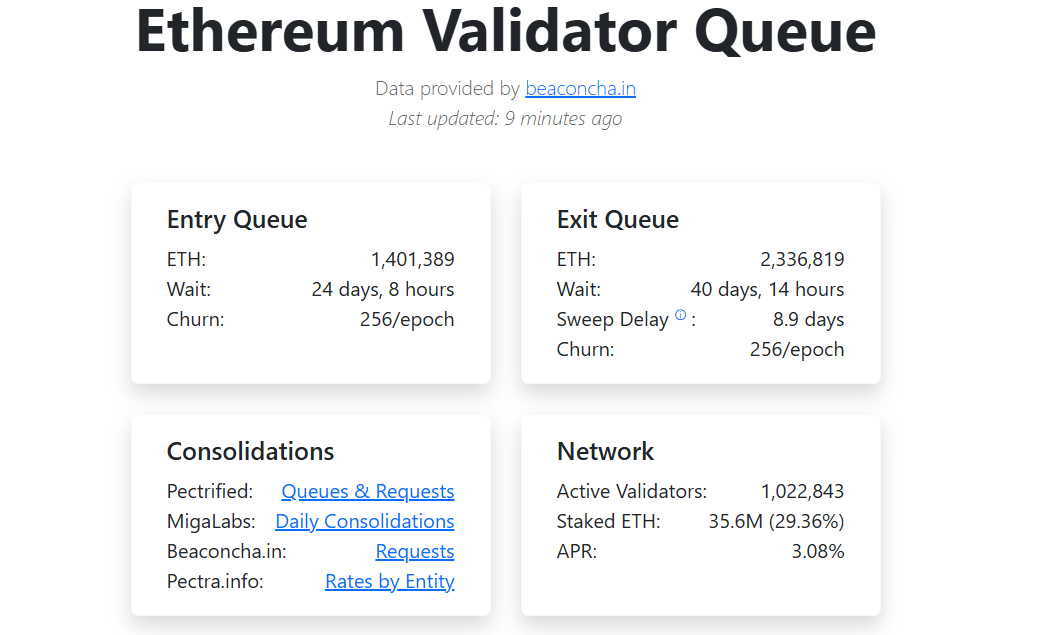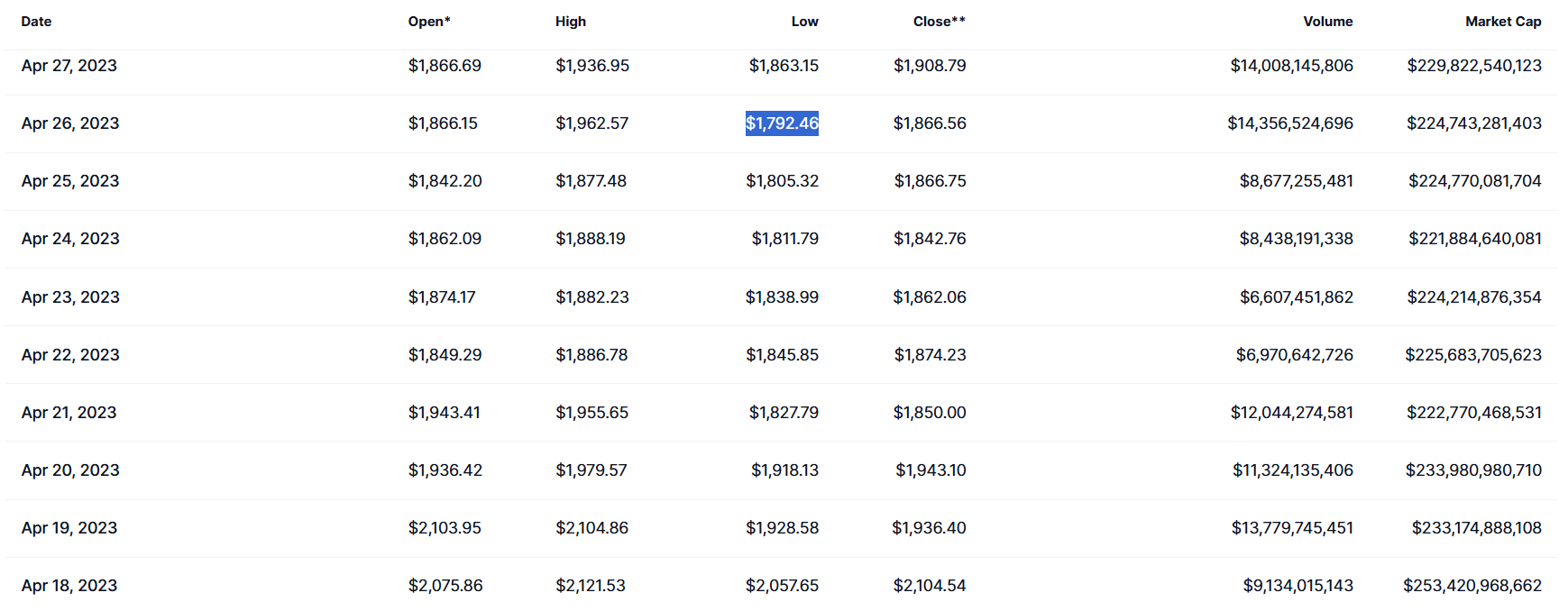Quick Breakdown
- Ethereum’s move to Proof-of-Stake and the 2023 Shanghai upgrade introduced liquidity through validator withdrawals, influencing short-term price and staking dynamics.
- Large validator exits can cause temporary volatility, but most withdrawn ETH is typically re-staked or used in DeFi, showing strong long-term network confidence.
- Historical data shows Ethereum’s resilience; past exit waves led to brief dips followed by recovery, reinforcing ETH’s role as a mature, yield-bearing digital asset.
Ethereum’s transition to Proof-of-Stake (PoS) after the Merge fundamentally changed how the network operates. Instead of miners, validators now secure the blockchain by staking 32 ETH to validate blocks and earn rewards. The Shanghai upgrade in 2023 unlocked the ability for these Ethereum validators to withdraw their staked ETH, introducing a new layer of crypto liquidity and potential volatility to the market.
Validator exits occur when participants decide to stop validating and withdraw their staked ETH, either partially or fully. While this is a natural part of network operations, large-scale exits can signal changing sentiment among major holders, affecting both network security and short-term market stability.
Currently, nearly 2,350 ETH, around $10 billion worth, is queued for withdrawal, raising questions about whether these validator exits could pressure ETH’s price or shift staking dynamics in the coming weeks.

Short-Term Liquidity and Market Pressure on ETH
When Ethereum validators exit, the ETH they withdraw becomes liquid again, meaning it can be freely traded or sold. This reintroduction of previously locked ETH into circulation can create short-term selling pressure, especially if exiting Ethereum validators decide to realise profits rather than re-stake. The extent of this pressure depends largely on market sentiment and whether the withdrawn ETH flows to exchanges or remains in personal wallets.
Liquidity dynamics are critical in this phase. If a large share of withdrawn ETH is quickly re-staked, either on Ethereum or through liquid staking platforms like Lido, the impact on supply remains limited. However, if re-staking activity slows and exchange inflows rise, it can signal growing market uncertainty and potential downward pressure on ETH’s price.
Investors and analysts should watch three key on-chain indicators:
- Exchange inflows: Rising volumes suggest that more ETH is being positioned for sale.
- Staking rate changes: A declining overall staking rate can indicate weakening confidence in long-term network participation.
- Burn metrics: Tracking ETH burned through gas fees helps gauge demand for block space; lower burn rates often align with cooling market activity.
Together, these signals provide a real-time snapshot of how validator exits are affecting Ethereum’s short-term crypto liquidity and market stability.
Historical Examples of Validator Mass Exits
Past validator exit waves reveal how Ethereum’s market handles large withdrawals. After the Shanghai and Capella upgrades in April 2023, when withdrawals were first allowed, Ethereum faced its first real test. More than 1 million ETH was unlocked within weeks, raising fears of a mass sell-off.
The market reaction, however, was controlled. ETH’s price briefly dropped about 15%, from $2,121.53 to $1,792.46 by late April, but soon recovered to $2,017.56 in early May as many Ethereum validators re-staked or shifted to liquid-staking platforms rather than sell.

Later, smaller exit waves showed similar trends. Short-term price dips were often balanced by new staking activity as yields increased. This revealed a clear behaviour among Ethereum validators: instead of leaving the network, many moved their funds within staking protocols or spread them across different pools to maximize returns.
The key takeaway from past exit cycles is that validator withdrawals don’t automatically lead to lasting price drops. The impact depends on the balance between selling and re-staking, overall crypto liquidity, and investor sentiment. Ethereum’s ecosystem has proven resilient, showing that while exits may cause brief volatility, long-term confidence in the network is strong.
Forecasting ETH Market Behaviour
Predicting how ETH will respond to large validator exits requires separating short-term market mechanics from longer-term structural drivers.
Andrei Grachev, founding partner at Falcon Finance, said that the growing Ethereum validator exit queue reflects increasing demand for “native yield.” More stakers now prefer on-chain returns over cashing out, showing that Ether is evolving into a “yield-bearing layer of capital” rather than a purely speculative asset.
In the short term, large validator exits may trigger selling pressure and brief volatility if withdrawn ETH flows to exchanges. However, much of this ETH is likely to be re-staked or moved into liquid staking protocols, limiting supply shocks. Over the long term, Ethereum’s fundamentals, its burn mechanism, Layer-2 expansion, and DeFi reintegration should help stabilize the market.
If exits are mainly profit-taking rather than loss of confidence, any price dips could offer short-term buying opportunities. ETH’s role as a yield-generating asset continues to strengthen, suggesting that validator rotations may reflect maturity rather than weakness in the network.
Broader implications for ETH as a yield-bearing asset
- Yield dynamics: Large exits lower the staked base, which can mechanically increase staking rewards for remaining Ethereum validators, improving the yield thesis and incentivizing re-staking. But if exits reflect reduced confidence in staking, the narrative weakens.
- Perceived safety of staking: Repeated, disorderly exit events could raise questions about the liquidity of staked ETH and the maturity of exit mechanisms, potentially slowing the adoption of retail and institutional staking.
- Product evolution: Expect more innovation in liquid staking, instant withdrawal primitives, and risk-mitigation products (insurance, options) to manage exit-related risk. These products can make ETH staking more attractive even amid withdrawal volatility.
- Market positioning: If ETH proves resilient through large exit cycles. For example, short dips followed by re-accumulation strengthen ETH’s case as a long-term yield-bearing network asset rather than a purely speculative token.
Conclusion: What Validator Exits Reveal About Market Maturity
Validator exits show how much Ethereum has matured since the Merge. While large withdrawals can create short-term price drops, they also prove that investors are actively managing their holdings. The steady balance between withdrawals and re-staking points to a healthy market driven by real yield opportunities and confidence in the network.
Overall, validator flexibility strengthens Ethereum. The ability to stake or exit freely keeps the network adaptive and transparent. Rather than showing weakness, validator exits reflect a mature ecosystem where ETH is seen as a reliable, yield-generating asset in the wider DeFi space.
Disclaimer: This article is intended solely for informational purposes and should not be considered trading or investment advice. Nothing herein should be construed as financial, legal, or tax advice. Trading or investing in cryptocurrencies carries a considerable risk of financial loss. Always conduct due diligence.
If you would like to read more articles like this, visit DeFi Planet and follow us on Twitter, LinkedIn, Facebook, Instagram, and CoinMarketCap Community.
Take control of your crypto portfolio with MARKETS PRO, DeFi Planet’s suite of analytics tools.”





















